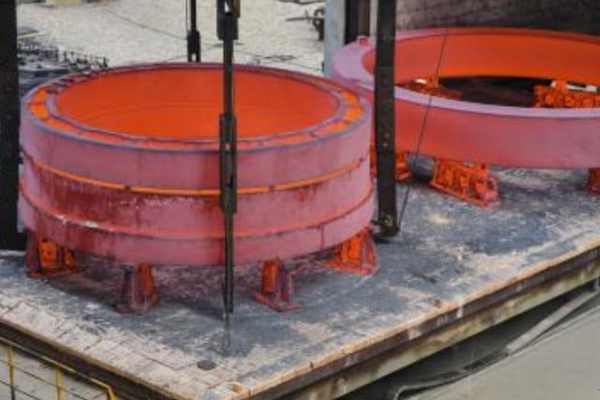The key to develop the cooling specification of forgings after forging is to choose the appropriate cooling rate to avoid the cooling defects mentioned above. Generally, the post-forging cooling specification is determined according to the chemical composition, microstructure characteristics, raw material state and section size of the bad material, with reference to relevant data.
In general, the simpler the chemical composition of the blank, the faster the cooling rate after forging, and the slower the other way around. For carbon steel and low alloy steel forgings, air cooling can be adopted after forging. And complex alloy composition of high alloy steel forgings or high hardenability forgings, after forging should be taken pit cooling or furnace cooling.
If carbon tool steel, alloy tool steel and bearing steel with high carbon content are cooled slowly after forging, network carbide will precipitate at grain boundary, which will seriously affect the service performance of forgings. Therefore, this kind of forgings are cooled to 700℃ by air cooling, blast or spray quickly after forging, and then the forgings are placed in pits or furnace to cool slowly.
For austenitic steel, ferrite steel and other steels without phase transformation, rapid cooling can be adopted because there is no phase transformation in the cooling process after forging. In addition, rapid cooling is also required to obtain single-phase structure and prevent slow cooling brittleness of ferrite steel at 475℃. Therefore, this kind of forgings can be air-cooled after forging.
For air-cooled steels, such as bainitic steel, martensitic stainless steel, high speed steel, high alloy tool steel, etc. Due to air cooling, bainite and martensite transformation can occur, which will cause large microstructure stress and easy to produce cooling cracks. Therefore, this type of forgings should be slowly cooled after forging.
For white spot sensitive steel, such as chrome-nickel steel, in order to prevent white spot in the cooling process, furnace cooling should be carried out according to certain cooling specifications.
Forgings made of steel have a faster cooling rate after forging, while those made of ingot steel have a slower cooling rate. In addition, forgings with large section size should be cooled slowly after forging because of large cooling temperature stress, while forgings with small section size can be cooled quickly after forging.
Post time: Aug-16-2021

